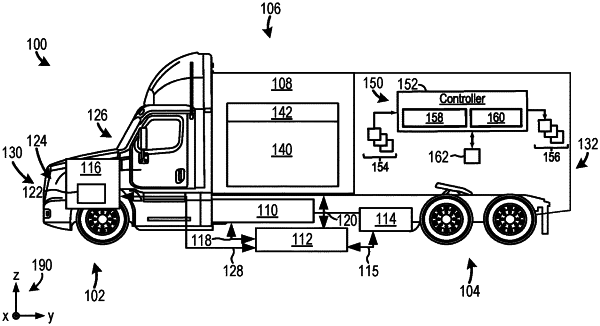| CPC B60L 58/33 (2019.02) [B60K 1/04 (2013.01); B60K 11/06 (2013.01); B60L 1/003 (2013.01); B60L 50/75 (2019.02); B60L 53/22 (2019.02); B60L 58/18 (2019.02); B60L 58/26 (2019.02); B60L 58/30 (2019.02); B60L 58/40 (2019.02); B60R 16/0238 (2013.01); H01M 8/04007 (2013.01); H01M 8/04302 (2016.02); H01M 8/04303 (2016.02); H01M 8/0432 (2013.01); H01M 8/04626 (2013.01); H01M 8/04955 (2013.01); H01M 10/48 (2013.01); H01M 10/613 (2015.04); H01M 10/625 (2015.04); H01M 16/006 (2013.01); H01M 50/249 (2021.01); B60K 2001/005 (2013.01); B60K 2001/0405 (2013.01); B60K 2001/0494 (2013.01); B60L 2210/10 (2013.01); B60L 2240/12 (2013.01); B60L 2240/36 (2013.01); B60L 2240/54 (2013.01); H01M 2220/20 (2013.01); H01M 2250/20 (2013.01)] | 20 Claims |

|
1. A method for operating an electric vehicle (EV) propulsion system, comprising:
while a traction battery assembly is operated to transfer electric power from the traction battery assembly to a traction motor, initiating start-up of a hydrogen fuel cell assembly based on a first state of charge (SOC) threshold that corresponds to the traction battery and a first hydrogen fuel storage threshold to transition into a hybrid mode of operation;
wherein the traction battery assembly includes one or more traction batteries that are electrically coupled to one or more hydrogen fuel cells in the hydrogen fuel cell assembly via a distribution assembly; and
wherein the distribution assembly is electrically coupled to the traction motor.
|